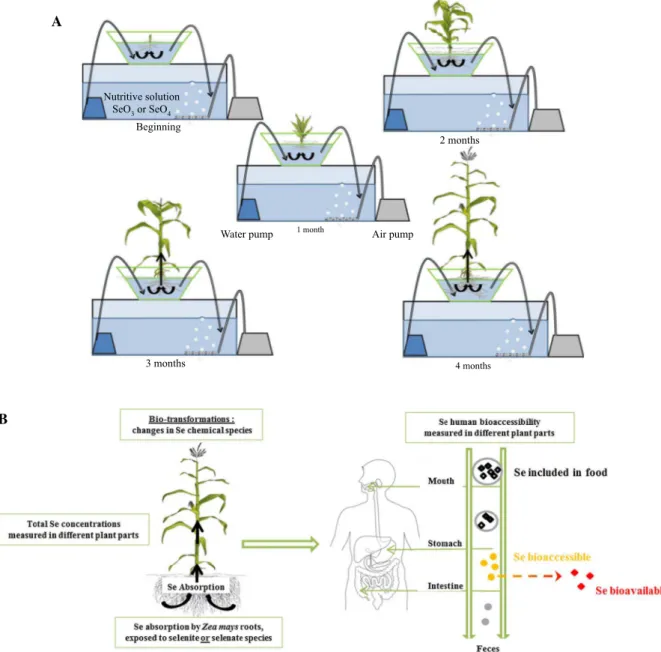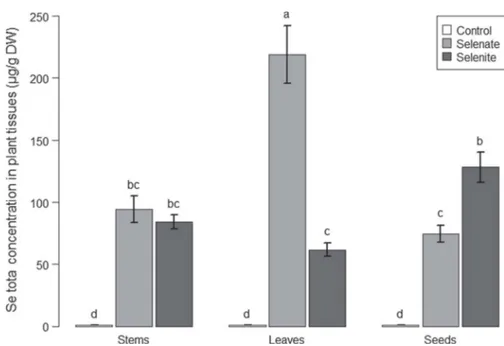Bioaccessibility of selenium after human ingestion in relation to its chemical species and compartmentalization in maize
Texte intégral
Figure



Documents relatifs
The characterization of the microstructure modifications by eddy currents allows detecting mechanical and metallurgical parameters of materials will be compared to the results
Selenium compartmentalization study showed that for selenate species, a preferential accumulation was observed in leaves, whereas selenite translocation was very limited toward
In situ volume mixing ratios (VMRs) of N 2 O measured by the SPIRALE instrument on 2 October 2002 at mid-latitudes (black line) and compared to the VMRs simulated by the Reprobus
The re- sulting coupled model allows the prediction of the aqueous- phase concentrations of chemical compounds originating from particle scavenging, mass transfer from the gas-phase
metallidurans CH34 were inoculated to an absorbance at 600 nm of 3 (stationary phase) and exposed to two different mixtures of selenite and selenate (2 mM selenite and 2 mM selenate,
Coupling of ToF-SIMS and AFM for the identification of the chemical species involved in the nucleation process of soot particles in flame combustion... Coupling of ToF-SIMS and AFM
Keywords: small RNAs, non-coding RNA, Streptococcus agalactiae, Streptococcus mutans, Streptococcus thermophilus, Regulatory RNA nomenclature... Streptococcal species are
o The results imply that the microencapsulation technique could reduce potential interaction of iron with other food components, reduce its exposure to